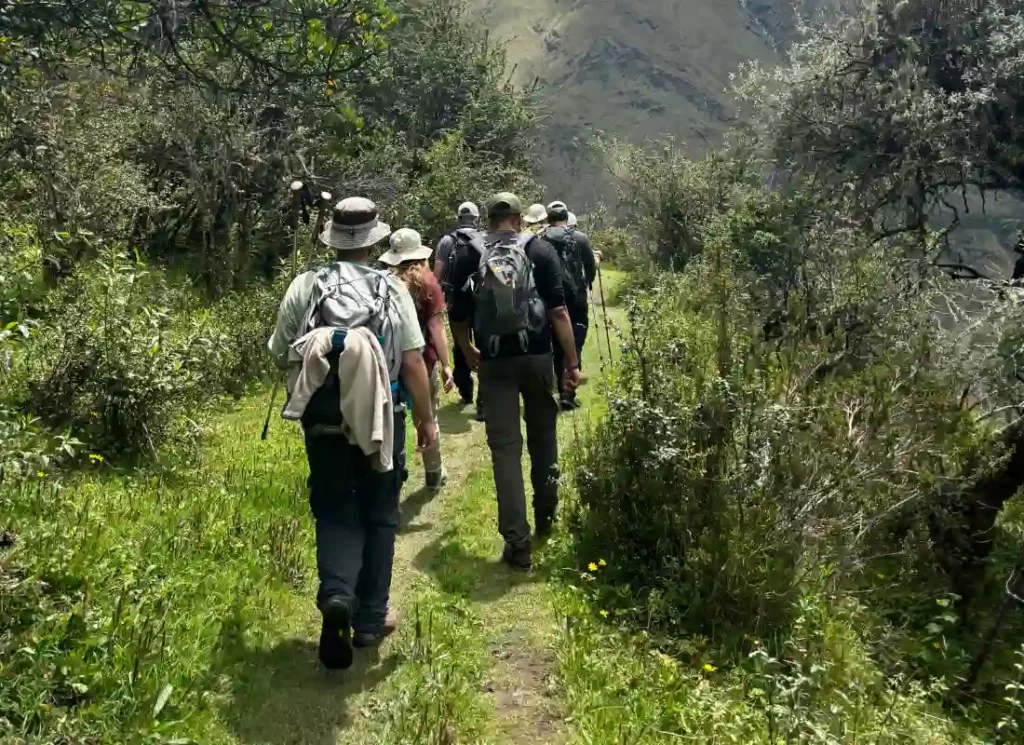When I was travelling in Peru and South America this year, the Salkantay Trek was all the rage. Well, I guess it was up-and-coming, because I hadn’t heard of it before I arrived and then all of a sudden it was all anyone talked about through the whole of Peru.
As hiking the Inca Trail becomes less accessible and more expensive, alternative hikes to Machu Picchu have started to shoot up in popularity. Honestly, I didn’t really do my research, so I can’t tell you why the Salkantay Trek in particular gained so much traction – everyone else was doing it, so I wanted to do it, too!
Whether you’re right at the beginning of planning your trip to Peru or just hours away from starting the Salkantay Trek, don’t worry, I can tell you everything you need to know. This is all information I gathered whilst I was on the trek itself, of course, but also from fellow travellers I pestered with questions before I left.

What is the Salkantay Trek?
Unlike the classic Inca Trail, the Salkantay Trek doesn’t follow any known path of the Incas. Instead it takes you up to Humantay Lake, through the Salkantay Pass which sits at 4,600m between Mount Salkantay and Mount Humantay, two of the highest mountains in Peru. You’ll then hike through the cloud forests at the very bottom of the Amazon Rainforest, through the Llactapata Pass with a distant view of Machu Picchu, and down to Aguas Calientes before ascending to Machu Picchu on the famous steps of the Incas.
The trek is longer in distance and in days than the Inca Trail, and climbs to higher altitudes, however it’s not a difficult hike if you have a good level of fitness and have spent a few days acclimatising to the altitude before you begin.
What to Pack for the Salkantay Trek
So, the vast majority of people will do this trek in Peru with a tour operator. We did meet one group along the way that was hiking the trail unguided, but I wouldn’t recommend it unless you’re a very advanced hiker because of how many obstacles and unforeseen events we encountered along the way.
If you do want to hike it without a guide, you will of course need to include additional equipment like tents, if you want to camp, food, water, etc.
This list is based on my experience of going with a tour guide, who arranged our food and accommodation for us. It is pretty standard that you can rent a duffel bag and sleeping bag from your tour company (sometimes for an additional cost, depending on the company).
You’re typically allowed to pack the duffel bag with up to 6kg, including your sleeping bag (and sleeping bag liner, if you’re given one). This bag will be transported by donkeys, porters, and vehicles along various sections of the trek, so you won’t have to carry it yourself along the trek.
You’ll also take a day pack, in which you’ll carry anything you’ll need during the day like water, snacks, your phone, etc. It’s also a good idea to keep anything valuable in your day pack.
It’s essential to pack light, both because of the weight restriction on your duffel bag, and because you want to be as light as possible when you’re walking. So, here’s what I packed!

🇵🇪 More on Peru: How to Get from Lima Airport to Miraflores
My Duffel Bag Packing List for the Salkantay Trek
- Sleeping bag (provided by the company)
- Sleeping bag liner (this was provided by my company, but not everyone gives this – I strongly recommend getting one if you can because it saved my life when we camped at 4,000 metres!)
- Underwear and socks x 5 (one for each day)
- One change of clothes
- Warm layers for night time, including a hat, gloves and poncho (the first night at 4,000 metres was absolutely brutal, but the rest were less cold)
- Thick socks
- Flip flops or sliders (for walking around camp when the last thing you want to do is put your hiking boots back on!)
- Very basic toiletries
- Spare snacks and energy bars
- Wet wipes and baby wipes
- Toilet paper
- Swimsuit (for going to the hot springs in Cocalmayo)
- Travel towel (we only had the chance for one shower during our trek)
🇵🇪 More on Peru: How to Get Arequipa to Cusco
My Day Pack Packing List for the Salkantay Trek
This is the bag I carried with me every day of the trek.
- Water bottle
- Money (for entrance fees, tips, and purchases in Aguas Calientes – your tour company will tell you exactly how much you’ll need)
- Phone
- Headlamp
- Rain poncho
- Portable charger & cables
- Sunscreen (the UV index gets crazy high at altitude, even when it’s cold)
- Sun hat
- Sunglasses
- Toilet paper
- Passport, in a ziplock bag (your original passport is required for Machu Picchu entry)
- Insect repellent
- Snacks and energy bars
- Altitude sickness tablets and painkillers, for emergencies
- Waterproof jacket (I mostly either wore this or tied it around my waste, it didn’t fit into my day pack)
- Hiking poles (usually available for rent if you don’t bring your own)
Everything else that I didn’t take on the Salkantay Trek, I put into my travelling backpack and checked it into the luggage storage at my hostel, which most accommodations will do free of charge.
🇵🇪 More on Peru: A guide to the Peru Backpacking Route
Additional Tips for the Salkantay Trek
Acclimatisation: Spend a few days in Cusco before your trek to adjust to the altitude. The Salkantay Pass reaches 4,630 metres above sea level.
Hiking boots: Make sure they’re not new, they must be broken in before your trek! But, equally, make sure you don’t do it in boots that are about to fall apart like I did…
Backpack quality: having a good quality backpack as your day bag makes all the difference in how comfortable it is to carry.
I personally did the Salkantay trek in March this year, and it was too soon after the rainy season: it rained every day, we got stuck on the side of a mountain due to landslides, and our views of Machu Picchu weren’t great due to the weather. My main piece of advice would be to go from April onwards!
